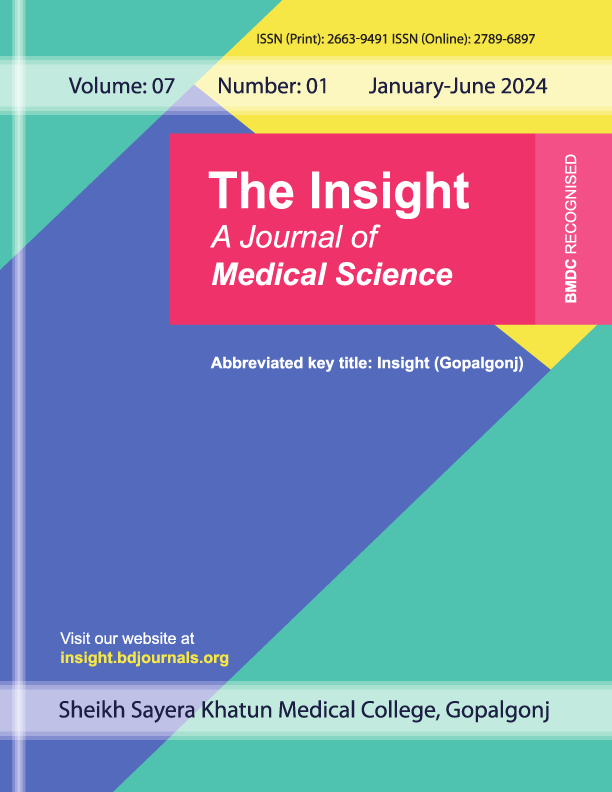Publiée 2024-11-15
Mots-clés
- Allergic Rhinitis,
- Pharmacological Treatments,
- Patient Education,
- Healthcare Utilization,
- Bangladesh
(c) Copyright The Insight 2024

Ce travail est disponible sous la licence Creative Commons Attribution 4.0 International .
Comment citer
Résumé
Introduction: Allergic rhinitis (AR) is a prevalent chronic condition that significantly impacts patients' quality of life and healthcare systems. Understanding the demographic characteristics, symptom severity, treatment modalities, and economic burden in an urban population is crucial for effective management, particularly in the regional context of Bangladesh. Methods & Materials: This study employed a mixed-methods approach, combining quantitative and qualitative data collection from 300 patients diagnosed with AR. Participants were recruited from urban healthcare facilities in Dhaka. Quantitative data were collected through standardized questionnaires at baseline, 6 months, and 12 months, assessing symptom severity using the Rhinoconjunctivitis Quality of Life Questionnaire (RQLQ) and Total Nasal Symptom Score (TNSS), treatment modalities, and healthcare utilization. Qualitative data were gathered through semi-structured interviews with patients and healthcare providers, analyzed using thematic analysis. Results: The study sample had a mean age of 35 years, with an equal gender distribution. Socioeconomic status was evenly distributed among low, middle, and high categories. A family history of AR was reported by 40% of participants, while 30% had other allergies. Baseline RQLQ and TNSS scores were 4.5 and 7.8, respectively, improving to 3.2 and 5.4 at 12 months. Pharmacological treatments were predominant, with 66.67% using antihistamines and 50% using nasal corticosteroids, showing adherence rates of 80% and 75%, respectively. Immunotherapy was used by 20% with an adherence rate of 85%. The mean number of healthcare visits was 5, with minimal hospitalizations, and the mean medication cost was 300 USD. Qualitative findings highlighted the importance of patient education and healthcare provider support in managing AR. Conclusion: Effective management of AR requires a combination of pharmacological treatments, immunotherapy, and robust patient education. Addressing the economic burden and enhancing adherence through tailored interventions are essential for improving patient outcomes, particularly in the regional context of Bangladesh.



